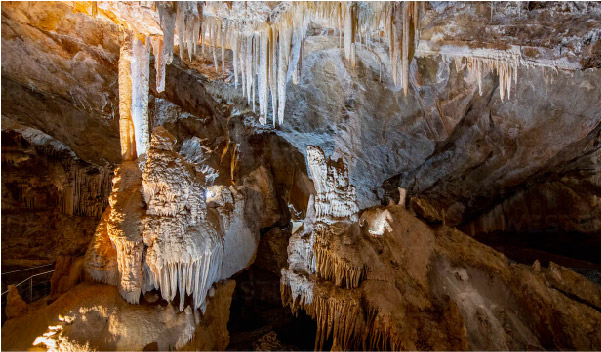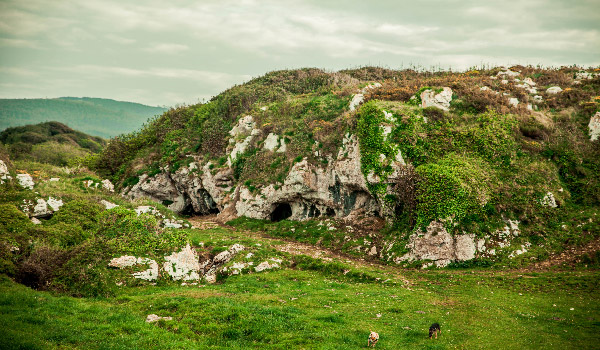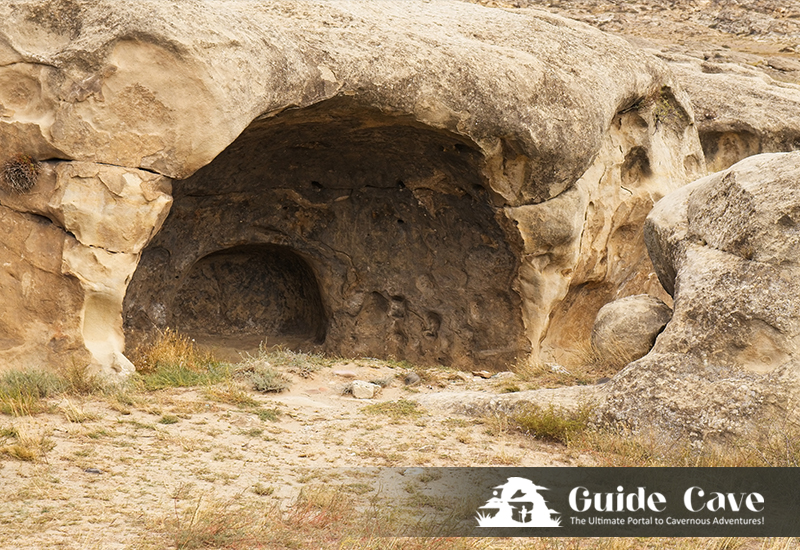Introduction
Caves are among the most ancient and mysterious natural formations on Earth, offering glimpses into our planet’s geological past and human history. Some caves date back hundreds of millions of years, having withstood natural disasters, climate shifts, and the slow but relentless march of time. These natural wonders serve as time capsules, preserving evidence of ancient climates, extinct species, and even early human civilizations.
But how have these caves survived for so long? The answer lies in geological stability, mineral composition, and environmental conditions that have helped protect them from erosion and collapse. From the Jenolan Caves in Australia to the Bluefish Caves in Canada, these subterranean wonders tell stories of resilience and change over millions of years.
In this article, we will explore the oldest caves in the world, the geological processes behind their formation, the factors that contribute to their longevity, and the threats they face today. By understanding these ancient caves, we gain valuable insights into the history of our planet and the importance of preserving these natural wonders for future generations.
1. The Geological Process of Cave Formation
Caves are not simply holes in the ground—they are the result of complex geological processes that take place over millions, or even hundreds of millions, of years. The formation of caves depends on various factors, including rock type, water movement, and chemical reactions that gradually carve out underground chambers and tunnels.
How Caves Are Created Over Millions of Years
Caves form through a process known as speleogenesis, which involves the dissolution, erosion, and deposition of rock material. The most common caves are created when slightly acidic water dissolves limestone or other soluble rocks over time. This process can take millions of years, as water slowly seeps into cracks, enlarging them until vast underground networks of caverns and tunnels emerge.
In some cases, caves are formed by volcanic activity or through the erosive power of ocean waves along coastal regions. Regardless of their origin, these caves represent an ongoing geological evolution that continues to shape the Earth’s crust.
Different Types of Caves
There are several types of caves, each formed by different geological processes:
- Solution Caves: The most common type, formed when acidic water dissolves limestone, dolomite, or gypsum. Examples include Mammoth Cave (USA) and Škocjan Caves (Slovenia).
- Lava Tubes: Created by flowing lava that cools and hardens on the surface while molten lava drains out, leaving behind an empty tunnel. Example: Kazumura Cave (Hawaii, USA).
- Sea Caves: Formed by wave action eroding coastal cliffs over time. Example: Fingal’s Cave (Scotland).
- Glacier Caves: Formed within glaciers by melting ice and flowing water. Example: Eisriesenwelt Cave (Austria).
- Erosional Caves: Created by the mechanical erosion of rock by wind or water. Example: Fairy Cave (Malaysia).
The Role of Water, Limestone, and Other Elements
Water plays a crucial role in cave formation. When rainwater absorbs carbon dioxide from the air and soil, it becomes slightly acidic and can dissolve limestone, gradually enlarging underground cavities. Over millions of years, this process results in the creation of massive cave systems with stalactites, stalagmites, and underground rivers.
2. Factors That Contribute to Cave Longevity
Not all caves survive for millions of years. Some collapse due to earthquakes, erosion, or human activities, while others remain remarkably intact. The longevity of a cave depends on a combination of geological, climatic, and environmental factors that help preserve its structure over time.
Geological Stability and Tectonic Activity
One of the most important factors in a cave’s survival is the stability of the surrounding rock. Some caves are located in geologically stable regions with minimal seismic activity, reducing the chances of collapse due to earthquakes or shifting tectonic plates.
For example, the Jenolan Caves in Australia, which date back 340 million years, have remained intact due to their location in a region with strong, ancient limestone formations that have resisted erosion.
Climate Conditions and Their Effects on Cave Preservation
The climate surrounding a cave also plays a key role in its longevity. Dry climates tend to preserve caves better than humid ones, as excessive moisture can lead to erosion and rock weakening over time.
Caves in arid regions, such as the Bluefish Caves in Canada, have been able to preserve fossils and artifacts for thousands of years due to their cold, dry environments, which slow down decay and protect delicate remains.
The Role of Mineral Deposits in Strengthening Cave Structures
Cave formations such as stalactites and stalagmites are made of calcium carbonate, which strengthens cave walls over time. Mineral-rich water deposits layers of calcite, reinforcing the cave structure and making it more resistant to collapse.
Some caves also contain crystal formations that help stabilize their interiors. For example, the Naica Crystal Cave in Mexico features enormous gypsum crystals that have been growing for hundreds of thousands of years, reinforcing the cave walls.
3. The World’s Oldest Known Caves
While many caves around the world are ancient, some stand out as the oldest cave systems ever discovered. Scientists use dating techniques like radiometric analysis, speleothem dating, and fossil examination to estimate the age of these caves.
The Jenolan Caves (Australia) – 340 Million Years Old

Considered one of the oldest cave systems on Earth, the Jenolan Caves in New South Wales, Australia, date back approximately 340 million years. These caves are carved out of limestone, which has resisted erosion for hundreds of millions of years.
The Jenolan Caves feature:
- Extensive underground tunnels and chambers
- Spectacular stalactites and stalagmites
- Evidence of prehistoric megafauna fossils
Their remarkable preservation is due to geological stability and minimal seismic activity, allowing them to survive for an incredibly long time.
The Bluefish Caves (Canada) – 24,000 Years of Human History

Located in the Yukon Territory of Canada, the Bluefish Caves are not only ancient but also hold evidence of early human habitation dating back at least 24,000 years.
These caves are significant because:
- They contain some of the oldest known human-made tools in North America.
- The cold climate of the Yukon has helped preserve fossils and artifacts for thousands of years.
- They provide key insights into the migration of early humans from Asia to North America.
Great! I’ll now continue with the next three sections, covering more ancient caves, natural and human threats to caves, and preservation efforts.
The Cueva de los Tayos (Ecuador) – A Cave of Myths and Scientific Discovery

Nestled deep in the Ecuadorian Amazon, the Cueva de los Tayos is believed to be around 200 million years old. This cave system is one of the most enigmatic in the world, partly due to its remote location and the myths surrounding it.
Mysteries and Myths
The cave gained fame when Erich von Däniken, the author of Chariots of the Gods, suggested that it contained evidence of an ancient alien civilization. This claim, though unsupported by scientific evidence, inspired a major expedition in 1976, which included astronaut Neil Armstrong.
Scientific Significance
Beyond the myths, Cueva de los Tayos is a geological and archaeological treasure:
- It features an extensive network of tunnels and chambers shaped by tectonic activity and water erosion.
- Indigenous Shuar people have long used the cave for ceremonial purposes, making it culturally significant.
- Fossils and remnants of prehistoric species have been found within its depths.
Despite its long history, the cave remains largely unexplored due to its rugged terrain and limited accessibility.
The Sterkfontein Caves (South Africa) – Cradle of Humankind

Located in South Africa’s Gauteng province, the Sterkfontein Caves are famous not only for their age (dating back at least 20 million years) but also for their importance in human evolution.
A Fossil Treasure Trove
The Sterkfontein Caves are part of the Cradle of Humankind, a UNESCO World Heritage Site. They have yielded some of the most important hominid fossils, including:
- “Mrs. Ples”, a 2.1-million-year-old skull of Australopithecus africanus.
- “Little Foot”, an almost complete hominid skeleton estimated to be 3.67 million years old.
Why These Caves Have Lasted Millions of Years
- The calcium carbonate-rich rocks help reinforce the cave structure.
- The climate in this region is relatively stable, reducing rapid weathering.
- Minimal seismic activity has prevented major collapses.
These caves offer unparalleled insights into early human ancestors, making them invaluable to paleoanthropologists.
The Škocjan Caves (Slovenia) – A River’s Masterpiece

The Škocjan Caves, dating back at least 3 million years, are one of Europe’s largest underground river cave systems. Located in Slovenia, they are a UNESCO World Heritage Site and a geological wonder.
Unique Features of Škocjan Caves
- They house one of the largest subterranean canyons in the world, carved by the Reka River.
- The caves are constantly evolving, as water continues to shape the limestone formations.
- Massive chambers such as the Martel Chamber stretch over 120 meters high.
How the Škocjan Caves Have Survived
- The cave system is naturally reinforced by mineral deposits from the river.
- Since they are still actively forming, they remain structurally sound.
- Their protected UNESCO status helps limit human impact.
These caves demonstrate how water and time sculpt nature, forming landscapes that endure for millions of years.
4. Natural and Human Threats to Ancient Caves
Even though some caves have existed for hundreds of millions of years, many are now under threat due to both natural and human activities.
Climate Change and Erosion
Climate change is accelerating cave erosion, particularly through:
- Rising temperatures that alter underground humidity levels.
- Increased flooding that erodes rock formations.
- Melting glaciers, which threaten ice caves like the Eisriesenwelt Cave in Austria.
Pollution and Environmental Damage
Industrial pollution and acid rain introduce harmful chemicals that:
- Corrode limestone and other soluble rocks.
- Disrupt fragile cave ecosystems, including rare cave-dwelling species.
- Contaminate underground water sources that flow through caves.
Human Tourism and Artifact Removal
While tourism can promote awareness, excessive foot traffic, vandalism, and littering can:
- Damage delicate formations, such as stalactites and stalagmites.
- Introduce artificial lighting, which encourages algae growth that discolors cave walls.
- Destroy archaeological sites, as seen in the case of the Lascaux Cave (France), which had to be closed to the public to protect its prehistoric paintings.
5. Preservation Efforts for Ancient Caves
Recognizing these threats, scientists, conservationists, and governments have taken significant steps to protect these ancient caves.
Conservation Initiatives and UNESCO Protections
Many of the world’s oldest and most significant caves have been designated as UNESCO World Heritage Sites, ensuring they receive legal protection. Examples include:
- Škocjan Caves (Slovenia) – Recognized for their underground river system.
- Mulu Caves (Malaysia) – Home to one of the world’s largest cave chambers.
- Mammoth Cave (USA) – The longest cave system in the world.
Role of Governments and Research Organizations
Governments worldwide have implemented policies to regulate tourism, mining, and industrial activities near caves. Some major initiatives include:
- France’s restrictions on Lascaux Cave to prevent further damage to prehistoric paintings.
- Australia’s protective measures for Jenolan Caves, limiting visitor access to fragile sections.
- South Africa’s excavation regulations at the Sterkfontein Caves to ensure responsible fossil research.
Sustainable Tourism Practices
Tourist sites have introduced eco-friendly cave exploration methods:
- Guided tours with strict entry limits to control human impact.
- Use of LED lighting instead of traditional bulbs to prevent algae growth.
- Prohibiting artifact collection and graffiti to maintain historical integrity.
These efforts are crucial to preserving caves so future generations can continue to study and admire them.
Great! I’ll now continue with the next sections, covering what ancient caves reveal about Earth’s history, their future, and concluding thoughts.

6. What Ancient Caves Tell Us About Earth’s History
Ancient caves serve as natural archives, preserving records of geological changes, past climates, extinct species, and even early human civilizations. By studying these caves, scientists uncover invaluable insights about our planet’s history.
Geological Timelines and Climate History
Caves contain speleothems (stalactites and stalagmites) that act as climate records, preserving information about past temperatures, rainfall, and atmospheric conditions.
- Speleothem Analysis: Scientists examine calcium carbonate layers in cave formations, much like tree rings, to determine climate fluctuations over millions of years.
- Oxygen Isotope Studies: By measuring the ratio of oxygen isotopes in cave deposits, researchers reconstruct historical climate patterns, including past ice ages and periods of extreme drought.
Example: The Soreq Cave in Israel has provided crucial evidence about climate changes in the Middle East over the past 185,000 years.
Fossils, Artifacts, and Human Evolution
Caves often protect fossils from erosion, scavengers, and weathering, making them excellent sites for discovering ancient remains.
Some of the most significant finds include:
- Denisova Cave (Russia): Fossilized remains of a previously unknown human ancestor, the Denisovans, dating back over 50,000 years.
- Sterkfontein Caves (South Africa): Home to hominid fossils over 3.67 million years old, shedding light on early human evolution.
- Bluefish Caves (Canada): Evidence that humans inhabited North America 10,000 years earlier than previously believed.
The Role of Caves in Scientific Research
Caves also provide insight into:
- Ancient ecosystems: Fossils of extinct species like the cave bear (Ursus spelaeus) and saber-toothed cats have been preserved in caves.
- Geological evolution: Lava tubes help scientists understand volcanic activity and the formation of planetary landscapes.
- Astrobiology research: Scientists study extreme cave environments to theorize about life on other planets (e.g., microbial life in Martian caves).
In short, ancient caves are time capsules that allow us to study Earth’s distant past.

7. The Future of the World’s Oldest Caves
Despite their endurance, many ancient caves face uncertain futures due to natural and human-induced threats. However, advances in technology, conservation, and exploration offer hope for their preservation.
How Climate Change Might Impact Ancient Caves
Climate change is a growing threat to caves worldwide:
- Rising temperatures can alter humidity levels, causing speleothems to stop growing.
- Increased rainfall and flooding can erode delicate formations and wash away archaeological evidence.
- Glacier melt threatens ice caves, such as Eisriesenwelt in Austria, which may disappear within decades.
How Modern Science is Protecting Ancient Caves
Scientists and conservationists are employing advanced technologies to monitor and protect cave ecosystems:
- 3D Laser Scanning: Used to digitally preserve caves, such as the Lascaux Cave in France, which is now closed to the public.
- Artificial Climate Control: In some caves, like Altamira Cave in Spain, climate control systems have been installed to prevent damage to prehistoric paintings.
- Bioengineering Solutions: Scientists are exploring ways to stabilize cave walls and prevent algae growth from artificial lighting.
The Discovery of New Caves
Despite their age, new caves are still being discovered, furthering our understanding of Earth’s history:
- Son Doong Cave (Vietnam): Discovered in 1991, it was later confirmed to be the world’s largest cave in 2009.
- Naica Crystal Cave (Mexico): Found in 2000, this cave contains massive gypsum crystals growing in extreme heat.
- Lechuguilla Cave (USA): Discovered in 1986, it contains rare sulfuric acid-formed passages, offering insights into underground life.
With continued exploration, we may still uncover more ancient caves, expanding our knowledge of Earth’s past.
Conclusion
Ancient caves are natural wonders that have stood the test of time, preserving invaluable evidence of Earth’s geological history, climate changes, and human evolution. Despite facing climate threats and human activity, conservation efforts continue to protect these incredible formations.
By respecting and preserving ancient caves, we not only safeguard natural history but also ensure that future generations can continue to explore and learn from them. Whether it’s the Jenolan Caves in Australia, the Sterkfontein Caves in South Africa, or the Škocjan Caves in Slovenia, each of these underground worlds holds untold stories waiting to be discovered.
Frequently Asked Questions (FAQs)
1. What is the oldest cave in the world?
The Jenolan Caves in Australia are considered one of the oldest known cave systems, estimated to be around 340 million years old.
2. How do scientists determine the age of caves?
Scientists use methods such as radiometric dating, speleothem analysis, and fossil examination to estimate the age of cave formations.
3. What factors help caves survive for millions of years?
Caves endure due to geological stability, mineral composition, and climate conditions that slow down erosion and structural collapse.
4. Are there still undiscovered ancient caves?
Yes, new caves continue to be found, particularly in remote regions. Advances in technology, including satellite imaging and laser scanning, are helping to uncover hidden cave systems.
5. What are the biggest threats to ancient caves today?
Major threats include climate change, pollution, human interference, and unregulated tourism, all of which can accelerate cave degradation.

